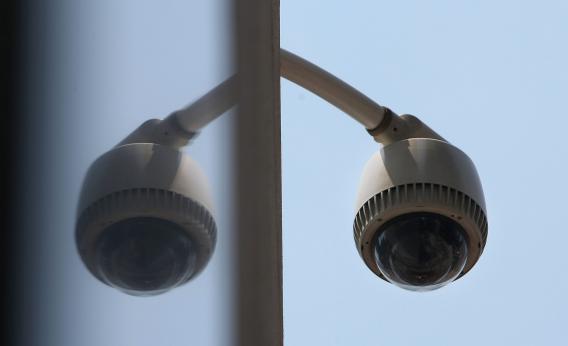The speedy onward march of biometric technology continues. After recently announcing plans for a nationwide iris-scan database, the FBI has revealed it will soon hand out free facial-recognition software to law enforcement agencies across the United States.
The software, which was piloted in February in Michigan, is expected to be rolled out within weeks. It will give police analysts access to a so-called “Universal Face Workstation” that can be used to compare a database of almost 13 million images. The UFW will permit police to submit and enhance image files so they can be cross-referenced with others on the database for matches.
Instituting the technology nationally is the latest stage in the FBI’s $1 billion Next-Generation Identification program, which will also establish a system for searching a database of scars, marks, and tattoos. The FBI’s Jerome Pender, who was recently named executive assistant director of the Information and Technology Branch, says in a statement that Hawaii, Maryland, South Carolina, Ohio, New Mexico, Kansas, Arizona, Tennessee, Nebraska, and Missouri have already expressed interest in trying out the UFW. Pender says that “full operational capability” for facial recognition is scheduled for the summer of 2014.
The FBI has been keen to emphasize that the 12.8 million images stored on the database will only include “criminal mug shot photos” taken during the booking process. Last week, in a bid to quell privacy concerns, the bureau said in a podcast that it will not “store photographs obtained from other sources such as social media.”
But it’s unlikely that assurance will satisfy civil liberties enthusiasts. In a blog post earlier this month, the Electronic Frontier Foundation said it was concerned that the “FBI wants to be able to search and identify people in photos of crowds and in pictures posted on social media sites—even if the people in those photos haven’t been arrested for or even suspected of a crime.” This sentiment was echoed in July by Sen. Al Franken, D-Minn., during a hearing at the Senate judiciary committee’s subcommittee on privacy, technology, and the law. Franken said that he feared the FBI’s technology “could be abused to not only identify protesters at political events and rallies, but to target them for selective jailing and prosecution, stifling their First Amendment rights.” (The same fears punctuated the recent hysteria about TrapWire, which is not actually facial recognition software, contrary to widely published claims.)
In addition to privacy concerns, UAW has another weak spot: It still isn’t that great at tracking people. Last year, the Wall Street Journal reported how human analysts still trump machines when it comes to comparing and identifying people from photographs. Poor quality images or bad lighting, for instance, can render facial recognition almost useless.
One thing that is true is that the software is advancing rapidly—and developments show no sign of slowing down. Aside from the FBI’s facial network software, companies are turning to facial recognition technology to take snapshots of shoppers in order to offer them customized deals linked to Facebook preferences. It’s enough to make you reluctant to show your face in public again. As Anonymous hacktivists have pointed out in a new video, however, there are some alternatives. Options include walking about with your head tilted at a 15 degree angle, caking your face in make-up, or wearing a plastic mask.
